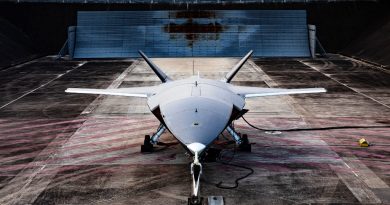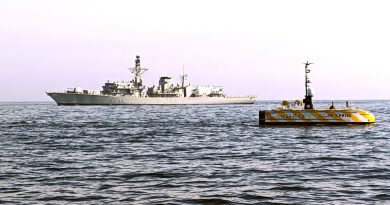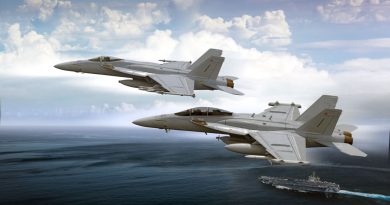FIA2024 – Autonomous behaviour trials by Boeing
Boeing has announced that it has completed a second phase of autonomous systems flight trials and carried out a representative Air Launched Effect (ALE) mission at Snowdonia Aerospace Centre in Llanbedr, Wales
As part of these latest trials, four fixed-wing Applied Aeronautics Albatross Beyond Visual Line of Sight (BVLOS) Uncrewed Aerial Vehicles (UAVs) were teamed to carry out a mission to detect and jam a radio frequency emitting from an enemy target. Each UAV was equipped with a mission system and used multispectral machine vision and search algorithms to respond to its environment and fellow teaming platforms.
“The latest demonstration builds on the success of the first series of autonomous flight trials that took place last year, where our UK team used an adaptable Boeing autonomy software framework to build intelligent behaviours deployable on multiple platforms,” said Steve Burnell, managing director of Boeing Defence UK. “As defence forces move towards greater adoption of autonomous and AI technologies, this innovative test programme could be the cornerstone of future autonomous collaborative platforms in the UK.”
Phase Two trials incorporate new capabilities such as autonomous platform-to-platform teaming that can target a position from a greater range and allows the platforms to cover more ground with higher confidence in target identity and location. The trials were carried out with support from Phantom Works Global and the University of Manchester.
This test of trusted autonomous behaviours has the potential to integrate with Boeing’s existing family of mature autonomous systems and builds on a series of global trials including a UK-hosted 2023 AUKUS trial held at Upavon Airfield in southwest England, which was part of the AUKUS Advanced Capabilities Pillar program to develop and test leading-edge technologies. More than 70 military and civilian defence personnel and industry contractors were involved in the exercise. The trial utilised a variety of air and ground vehicles to test target identification capability, including the Blue Bear Ghost and Boeing/Insitu CT220 UAVs.
The trilateral teams collaborated to develop joint machine-learning (ML) models, apply test and evaluation processes, and fly on different national UAVs. The ML models were quickly updated to include new targets and shared among the coalition and AI models retrained to meet changing mission requirements.
Low cost and attritable ALEs that can operate alongside crewed platforms will be a force multiplier on the battlefield and deliver enhanced military capability to frontline operators.
Photos courtesy Applied Aeronautics and UK MoD





